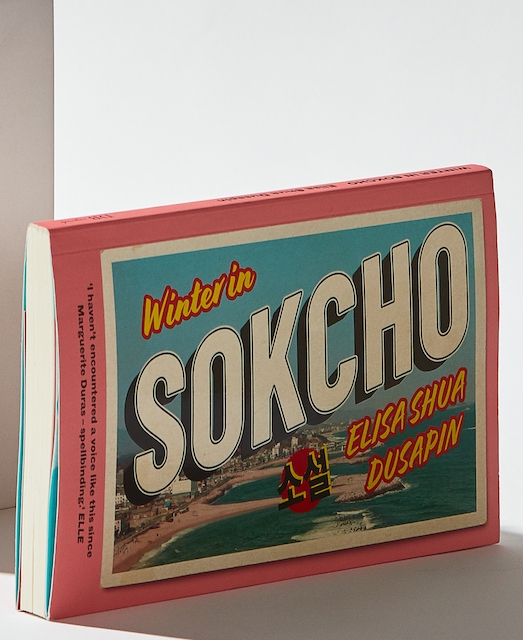By Elisa Shua Dusapin, translated by Aneesa Abbas Higgins, Daunt Books Originals, £9.99 (softcover)
Reviewed by Fi Churchman
She doesn’t have a name, or at least no one speaks it. She works in a quiet, dilapidated guesthouse in Sokcho, a fishing town and popular holiday destination in northern South Korea. It’s off-season, desolate and cold. Unsure of what she wants in life, she is adrift.
Winter in Sokcho – in its first English translation; the novel was originally published in French in 2016 – takes place over a few weeks either side of Seollal (Korean New Year), during which the protagonist finds herself drawn towards a guest at the hotel: Yan Kerrand, an enigmatic French comic artist who, having wandered the world for years, has arrived in this small border town to finish the last of a comic book series.
Elisa Shua Dusapin’s first-person narrative is formed of crystalline sentences that favour lucid imagery to describe themes of loneliness, familial obligation, identity (the protagonist’s mother is a Korean fishmonger, but she doesn’t know her European father), societal pressures and sexuality. And while all this seems to lie just beneath the same layer of ice that keeps the town frozen over the winter, Dusapin has a knack for thawing the narrative with moments of intimate tension between the protagonist and Kerrand, or with more intensely corporal descriptions like, ‘I scrubbed myself for a long time… scraping away at dead skin cells and sebum… then I plunged into the scalding water until my skin dissolved into a mass of muscle and fat’ – uncomfortably mirrored by a description of the mother’s preparation of puffer fish. Indeed, the act of scrubbing and of renewal is a recurring motif: in another guest, whose cosmetically altered face is hidden by bandages, in Kerrand’s nightly, ritual ripping-up of his drawings.
Throughout the novel there is a melancholic sense that, like footprints in the snow, the relationship between the protagonist and Kerrand is on the brink of melting away. And it’s only at the very end, at the brittle edges of this love story, that the characters break apart from each other. It’s also in this act that they finally find themselves coming into form.
From the spring 2020 issue of ArtReview Asia
